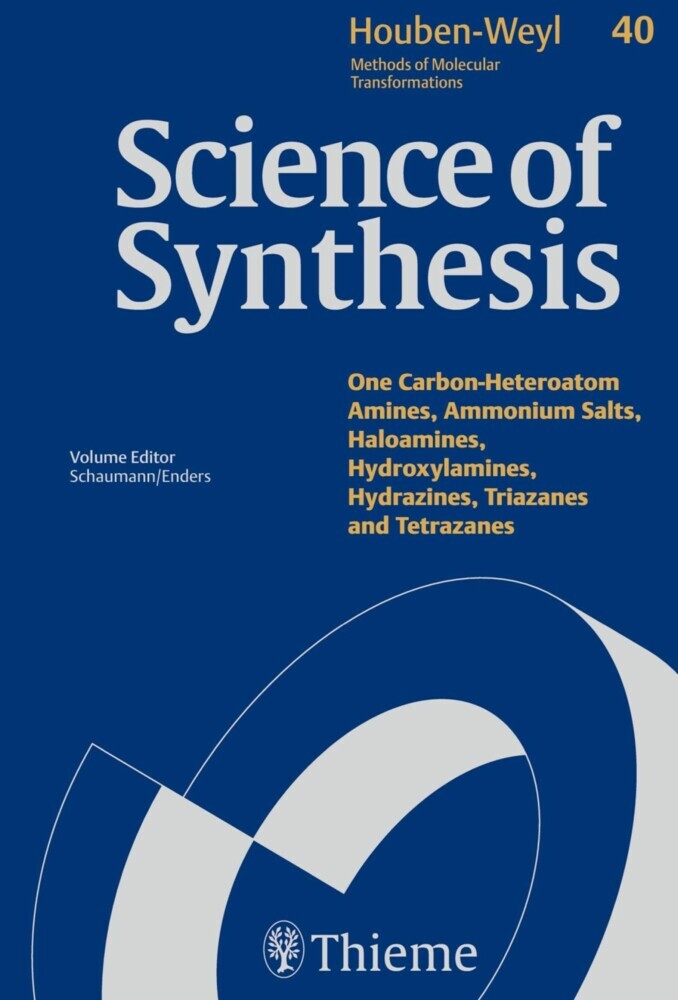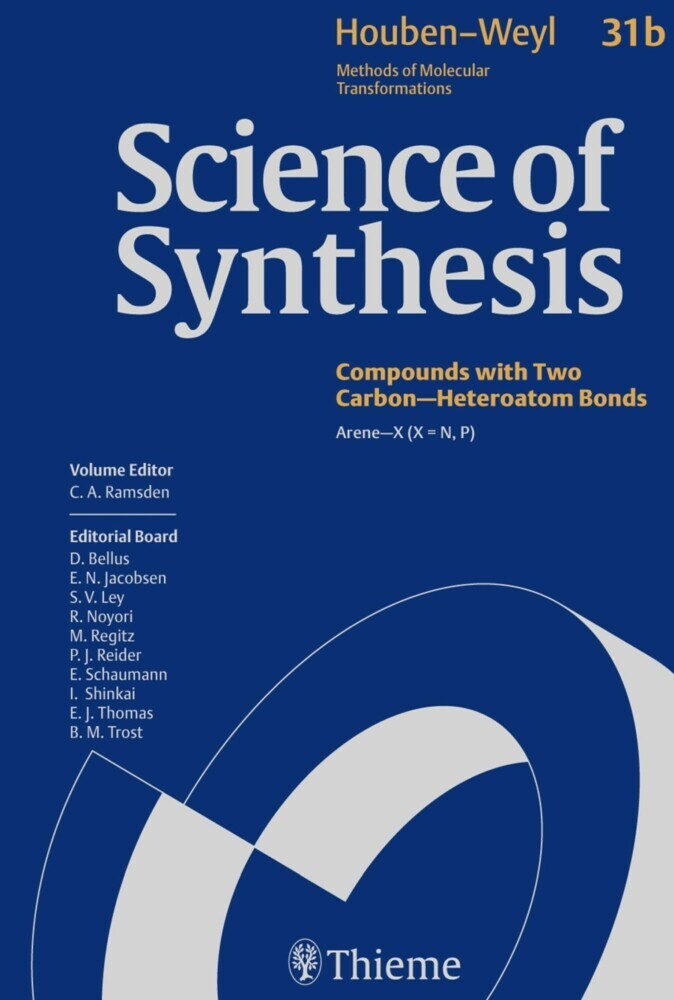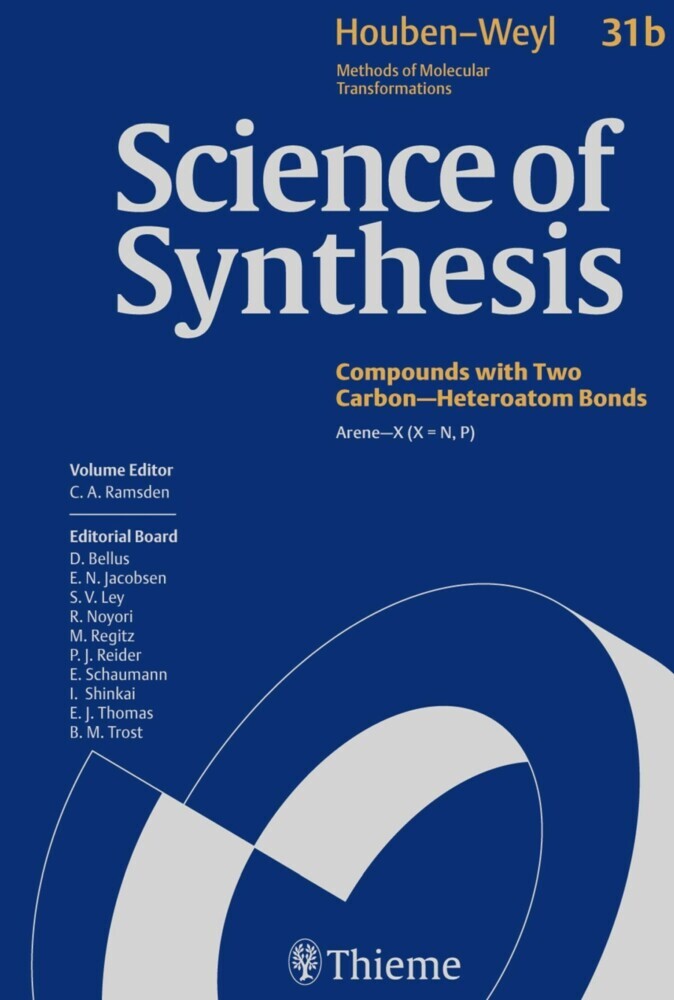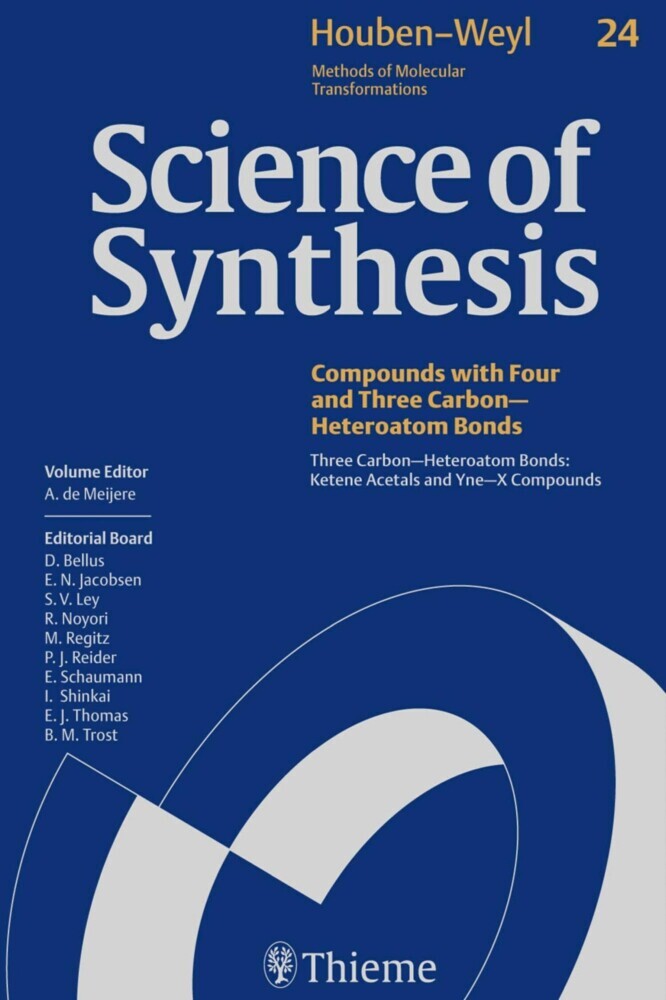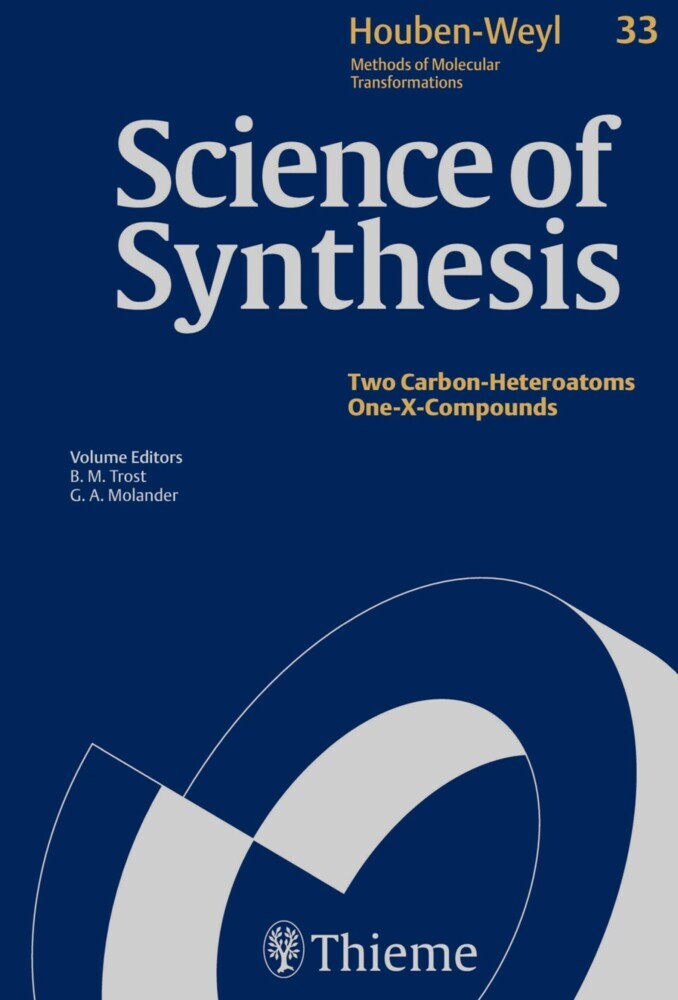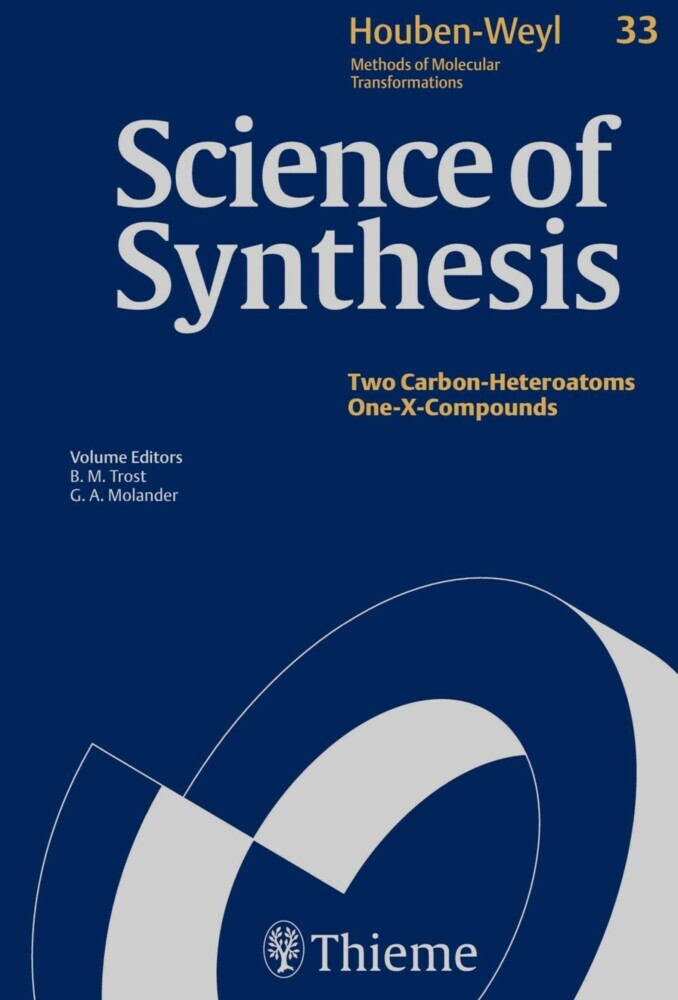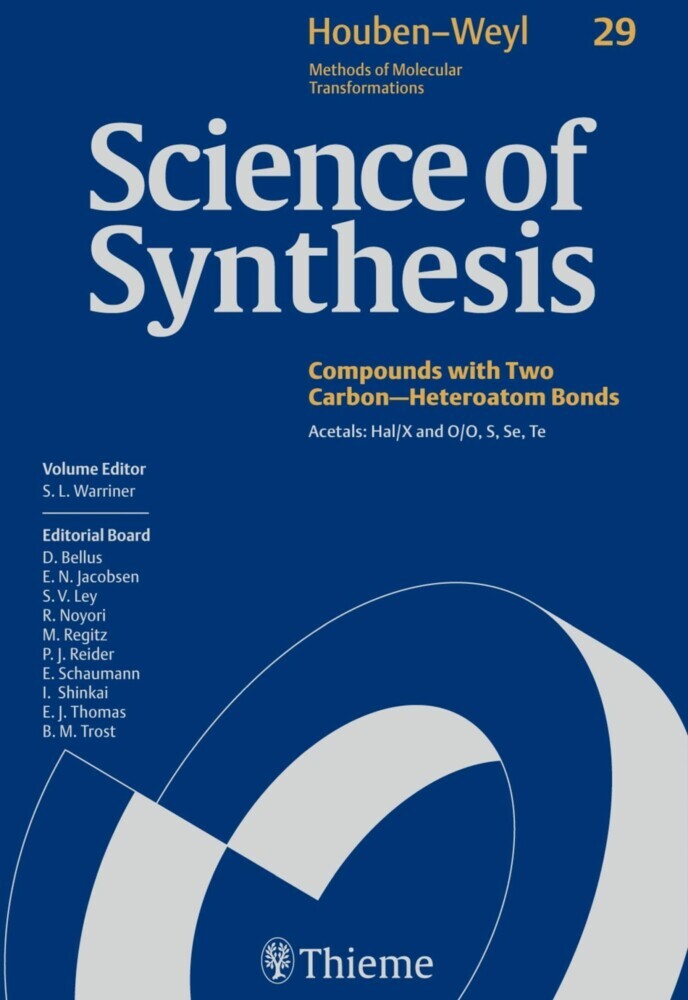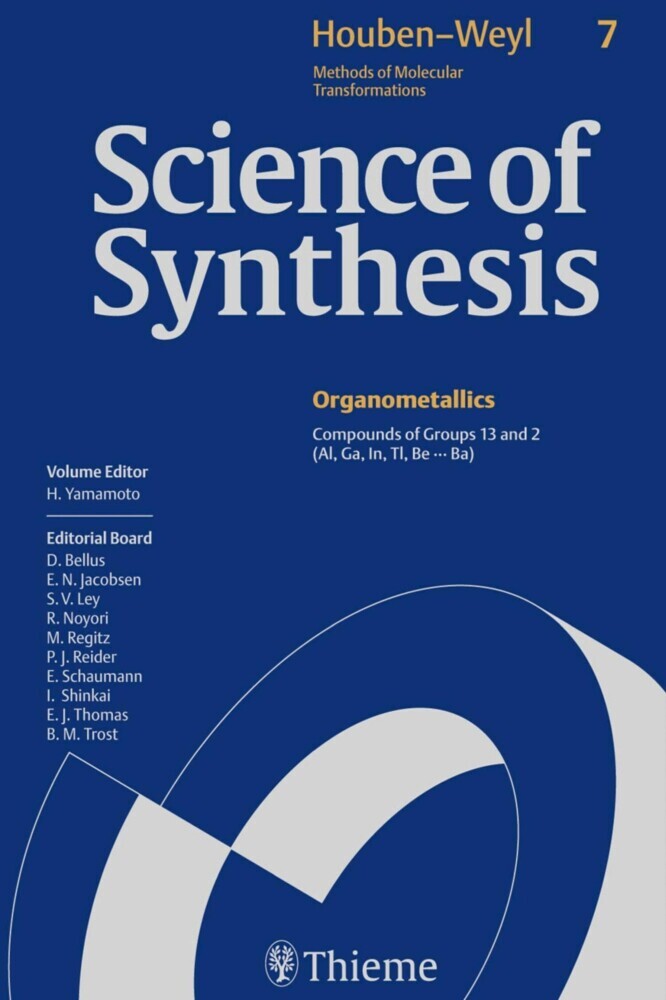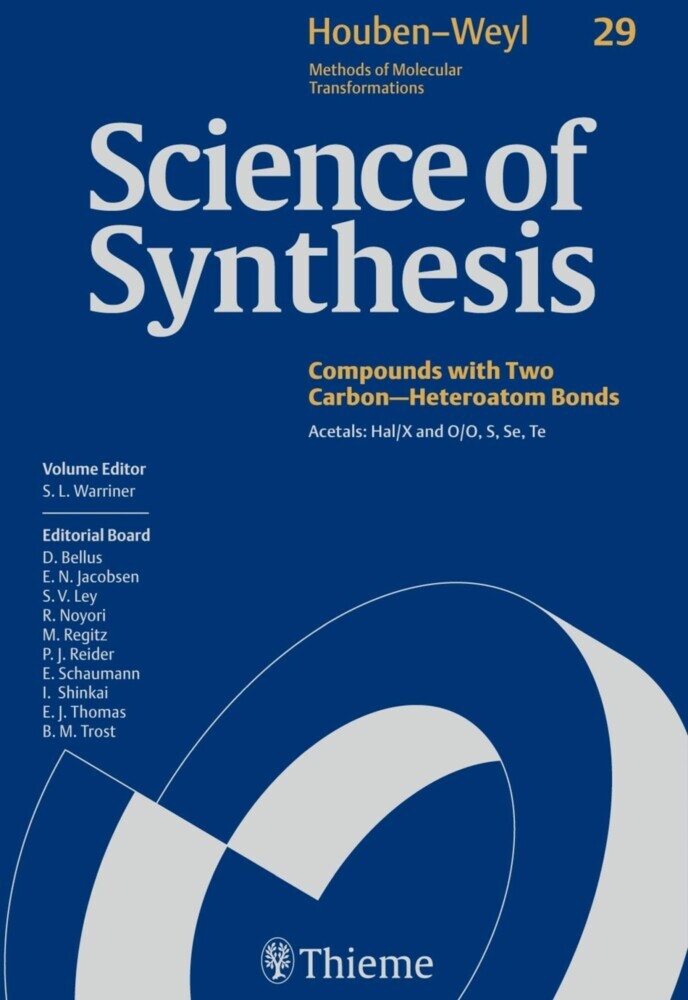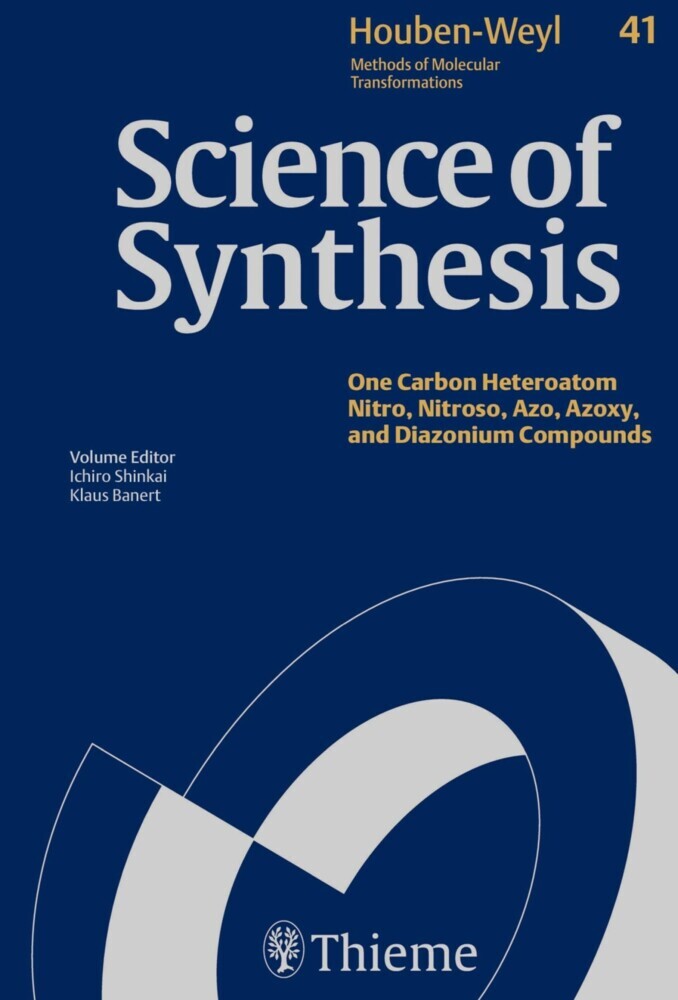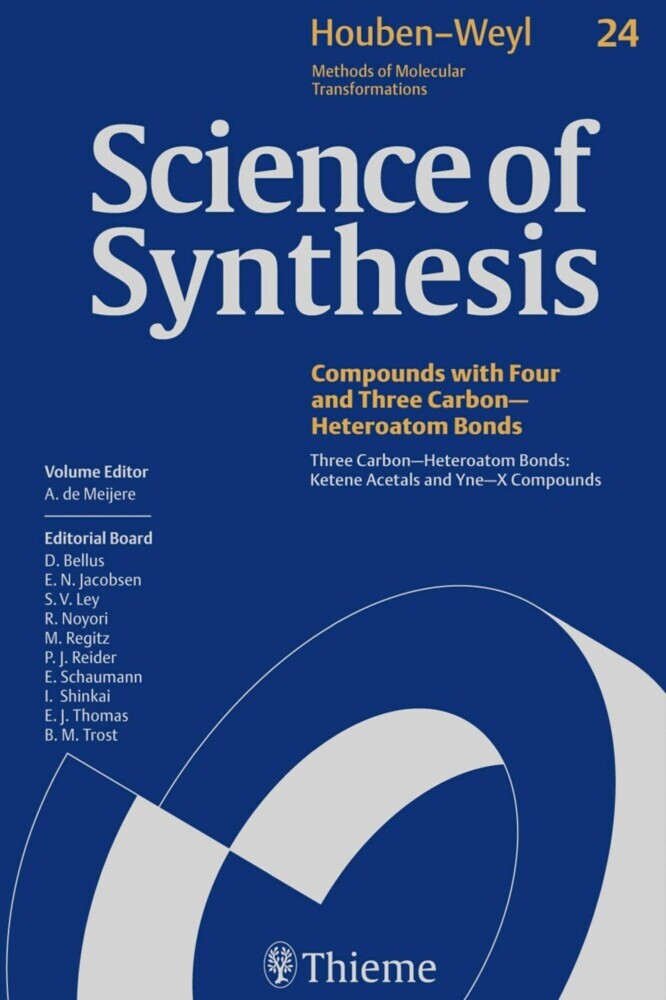Science of Synthesis: Houben-Weyl Methods of Molecular Transformations Vol. 40a
Science of Synthesis: Houben-Weyl Methods of Molecular Transformations Vol. 40a
Turning Information Into Knowledge
Science of Synthesis: Houben-Weyl Methods of Molecular Transformations is the entirely new edition of the acclaimed reference series Houben-Weyl, the standard synthetic chemistry resource since 1909. This new edition is published in English and will comprise 48 volumes published between the years 2000 and 2008.
Science of Synthesis is a quality reference work developed by a highly esteemed editorial board to provide a comprehensive and critical selection of reliable organic and organometallic synthetic methods. This unique resource is designed to be the first point of reference when searching for a synthesis strategy.
- Contains the expertise of presently 400 leading chemists worldwide
- Critically evaluates the preparative applicability and significance of the synthetic methods
- Discusses relevant background information and provides detailed experimental procedures
For full information on the Science of Synthesis series, visit the Science of Synthesis Homepage
1;Volume 40a: Amines and Ammonium Salts;1 1.1;Title page;3 1.2;Imprint;5 1.3;Preface;6 1.4;Volume Editors Preface;8 1.5;Overview;10 1.6;Table of Contents;12 1.7;Introduction;30 1.8;40.1 Product Class 1: Amino Compounds;36 1.8.1;40.1.1 Product Subclass 1: Alkyl- and Cycloalkylamines;36 1.8.1.1;40.1.1.1 Synthesis by Reduction;52 1.8.1.1.1;40.1.1.1.1 Reduction of Carbonic and Carboxylic Acid Derivatives;52 1.8.1.1.1.1;40.1.1.1.1.1 Method 1: Reduction of Carbon Monoxide Gas;52 1.8.1.1.1.2;40.1.1.1.1.2 Method 2: Reduction of Carbamates;52 1.8.1.1.1.2.1;40.1.1.1.1.2.1 Variation 1: Reduction with Aluminum Hydrides;53 1.8.1.1.1.2.2;40.1.1.1.1.2.2 Variation 2: Catalytic Hydrogenation;54 1.8.1.1.1.2.3;40.1.1.1.1.2.3 Variations 3: Miscellaneous Reductions;56 1.8.1.1.1.3;40.1.1.1.1.3 Method 3: Reduction of Isocyanates or Isothiocyanates;57 1.8.1.1.1.4;40.1.1.1.1.4 Method 4: Reduction of Nitriles;58 1.8.1.1.1.4.1;40.1.1.1.1.4.1 Variation 1: Catalytic Hydrogenation;58 1.8.1.1.1.4.2;40.1.1.1.1.4.2 Variation 2: Reduction with Aluminum Hydrides;63 1.8.1.1.1.4.3;40.1.1.1.1.4.3 Variation 3: Reduction with Boranes;67 1.8.1.1.1.4.4;40.1.1.1.1.4.4 Variation 4: Reduction with Borohydrides;70 1.8.1.1.1.4.5;40.1.1.1.1.4.5 Variation 5: The Kulinkovich--de Meijere Reaction;73 1.8.1.1.1.5;40.1.1.1.1.5 Method 5: Reduction of Amides or Thioamides;74 1.8.1.1.1.5.1;40.1.1.1.1.5.1 Variation 1: Reduction with Aluminum Hydrides;74 1.8.1.1.1.5.2;40.1.1.1.1.5.2 Variation 2: Reduction with Borane Derivatives;77 1.8.1.1.1.5.3;40.1.1.1.1.5.3 Variation 3: Reduction with Hydrosilanes;78 1.8.1.1.1.5.4;40.1.1.1.1.5.4 Variation 4: Reduction of Thioamides;79 1.8.1.1.1.5.5;40.1.1.1.1.5.5 Variation 5: The Kulinkovich--de Meijere Reaction;80 1.8.1.1.1.6;40.1.1.1.1.6 Method 6: Reduction of Imides;83 1.8.1.1.1.7;40.1.1.1.1.7 Method 7: Reduction of Imidates and Imidoyl Chlorides;84 1.8.1.1.2;40.1.1.1.2 Reductive Amination of Carbonyl Compounds;94 1.8.1.1.2.1;40.1.1.1.2.1 Alkylamines from Carbonyl Compounds by Direct Reductive Amination;94 1.8.1.1.2.1.1;40.1.1.1.2.1.1 Method 1: Direct Reductive Amination by Catalytic Hydrogenation;95 1.8.1.1.2.1.1.1;40.1.1.1.2.1.1.1 Variation 1: Hydrogenation Using Heterogeneous Metal Catalysts;95 1.8.1.1.2.1.1.2;40.1.1.1.2.1.1.2 Variation 2: Hydrogenation Using Homogeneous Metal Complex Catalysts;96 1.8.1.1.2.1.1.3;40.1.1.1.2.1.1.3 Variation 3: Palladium-Catalyzed Transfer Hydrogenation;97 1.8.1.1.2.1.2;40.1.1.1.2.1.2 Method 2: Direct Reductive Amination Using Silanes as a Hydrogen Source;98 1.8.1.1.2.1.2.1;40.1.1.1.2.1.2.1 Variation 1: Using Polymethylhydrosiloxane;98 1.8.1.1.2.1.2.2;40.1.1.1.2.1.2.2 Variation 2: Using Aminohydrosilanes;98 1.8.1.1.2.1.2.3;40.1.1.1.2.1.2.3 Variation 3: Using Triethylsilane;99 1.8.1.1.2.1.3;40.1.1.1.2.1.3 Method 3: Direct Reductive Amination with Borohydride or Borane Reducing Agents;99 1.8.1.1.2.1.3.1;40.1.1.1.2.1.3.1 Variation 1: Using Sodium Cyanoborohydride;99 1.8.1.1.2.1.3.2;40.1.1.1.2.1.3.2 Variation 2: Using Sodium Borohydride;101 1.8.1.1.2.1.3.3;40.1.1.1.2.1.3.3 Variation 3: Using Zirconium(II) or Copper(I) Borohydrides;102 1.8.1.1.2.1.3.4;40.1.1.1.2.1.3.4 Variation 4: Using Sodium Triacyloxyborohydrides;103 1.8.1.1.2.1.3.5;40.1.1.1.2.1.3.5 Variation 5: Using Aminoboranes;103 1.8.1.1.2.2;40.1.1.1.2.2 Primary Alkylamines from Oximes and O-Alkyloximes;104 1.8.1.1.2.2.1;40.1.1.1.2.2.1 Primary Alkylamines from Oximes;105 1.8.1.1.2.2.1.1;40.1.1.1.2.2.1.1 Method 1: Catalytic Hydrogenation;105 1.8.1.1.2.2.1.2;40.1.1.1.2.2.1.2 Method 2: Catalytic Transfer Hydrogenation;106 1.8.1.1.2.2.1.3;40.1.1.1.2.2.1.3 Method 3: Reduction with Metallic Zinc;106 1.8.1.1.2.2.1.3.1;40.1.1.1.2.2.1.3.1 Variation 1: Using Zinc in the Presence of Ammonia;106 1.8.1.1.2.2.1.3.2;40.1.1.1.2.2.1.3.2 Variation 2: Using Zinc in the Presence of a Carboxylic Acid;107 1.8.1.1.2.2.1.4;40.1.1.1.2.2.1.4 Method 4: Reductions with Borane or Borohydrides;108 1.8.1.1.2.2.1.4.1;40.1.1.1.2.2.1.4.1 Vari
| ISBN | 9783131721716 |
|---|---|
| Artikelnummer | 9783131721716 |
| Medientyp | E-Book - PDF |
| Copyrightjahr | 2014 |
| Verlag | Georg Thieme Verlag KG |
| Umfang | 844 Seiten |
| Sprache | Englisch |
| Kopierschutz | Digitales Wasserzeichen |

